Trending Now
We have updated our Privacy Policy and Terms of Use for Eurasia Group and its affiliates, including GZERO Media, to clarify the types of data we collect, how we collect it, how we use data and with whom we share data. By using our website you consent to our Terms and Conditions and Privacy Policy, including the transfer of your personal data to the United States from your country of residence, and our use of cookies described in our Cookie Policy.
{{ subpage.title }}
10 images that captured 2023
With 2023 in our rearview mirror, here are some of the images that defined the tumultuous year: from Fulton County, Georgia to Gaza City,
Feb. 5: Spy Balloon Downed
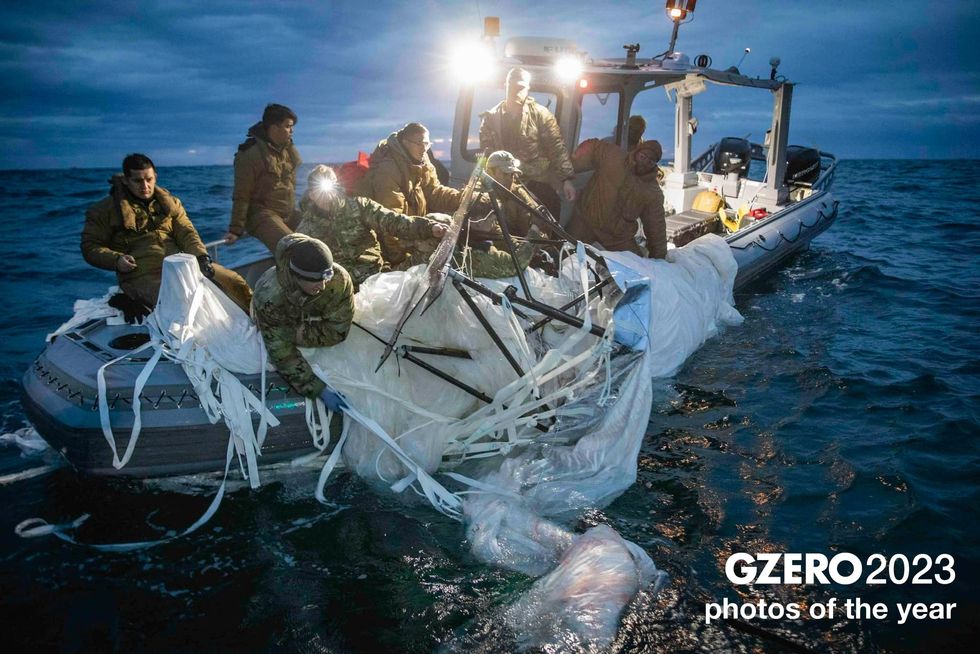
Credit: Sipa USA via Reuters
Sailors assigned to Explosive Ordnance Disposal Group 2 recover a Chinese high-altitude surveillance balloon off the coast of Myrtle Beach, South Carolina, Feb. 5, 2023.
Feb. 10: Earthquake shakes Turkey and Syria
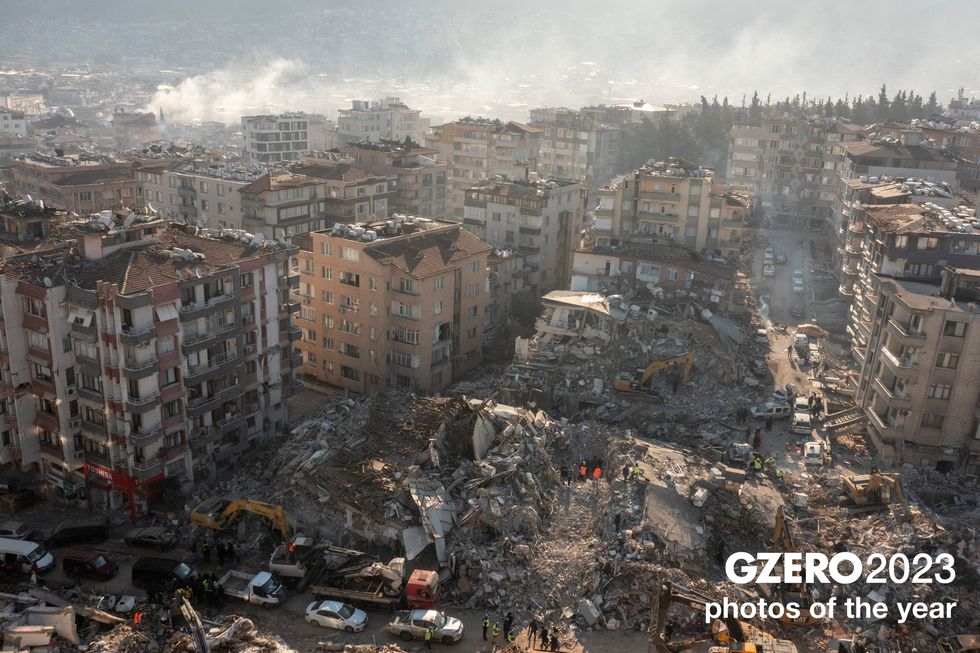
Credit: Umit Bektas/Reuters
An aerial view shows damaged and collapsed buildings in the aftermath of a deadly earthquake in Hatay, Turkey February 10, 2023.
March 23: France protests pension changes
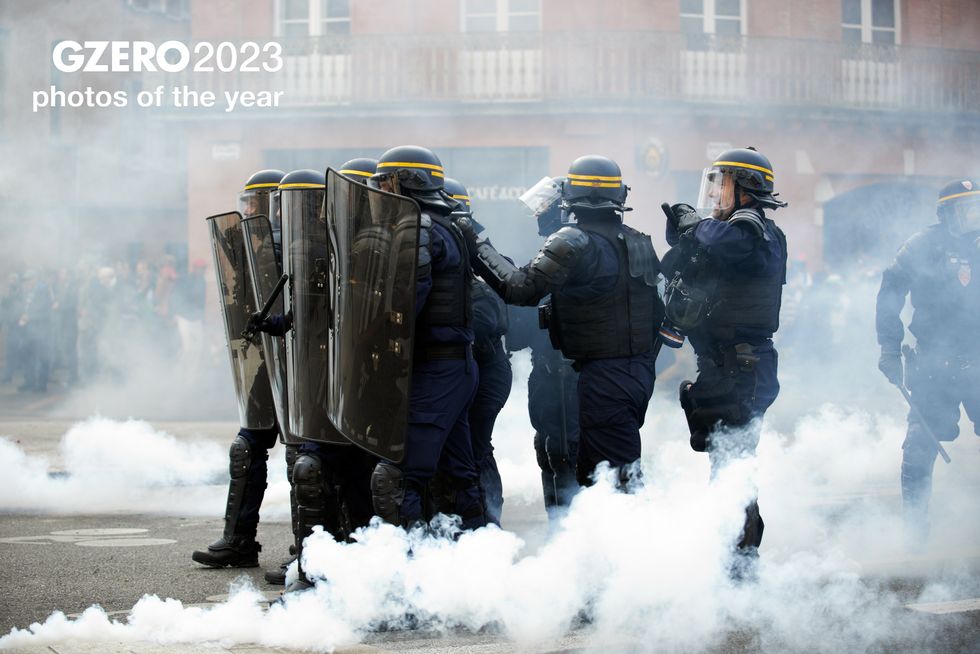
Credit: Alain Pitton/NurPhoto via Reuters
Riot policemen stands amid clouds of tear gas as more than 70,000 people protest in Toulouse against French President Emmanuel Macron’s attempt to raise the national retirement age and change pension benefits. March 23th 2023.
May 6: King Charles III coronated
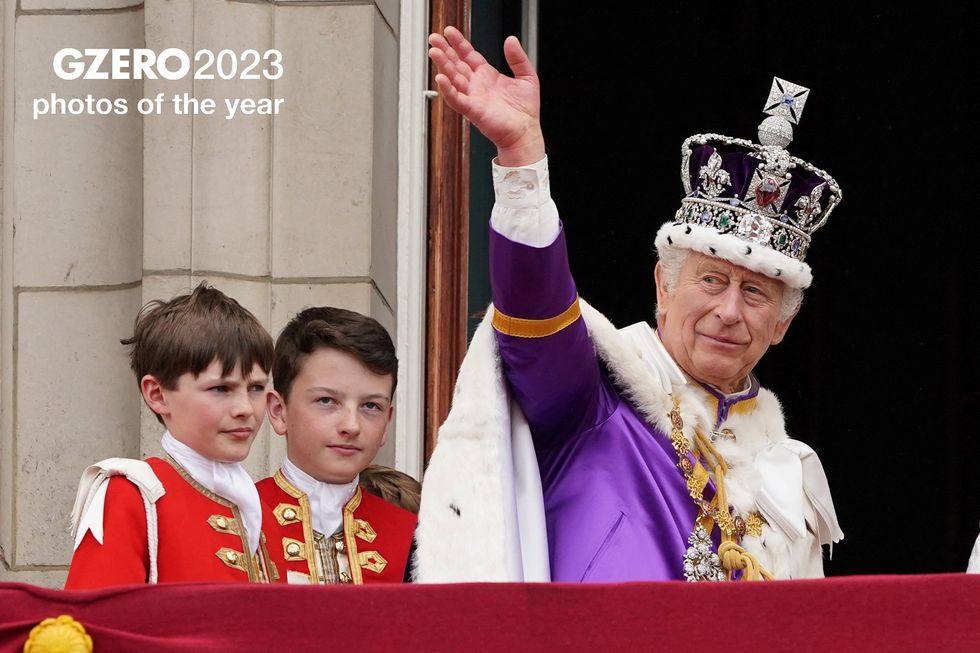
Credit: Stefan Rousseau/Pool via REUTERS
King Charles III waves as he leaves the balcony of Buckingham Palace, London, following his coronation, May 6, 2023.
Jun. 7: Canadian wildfires
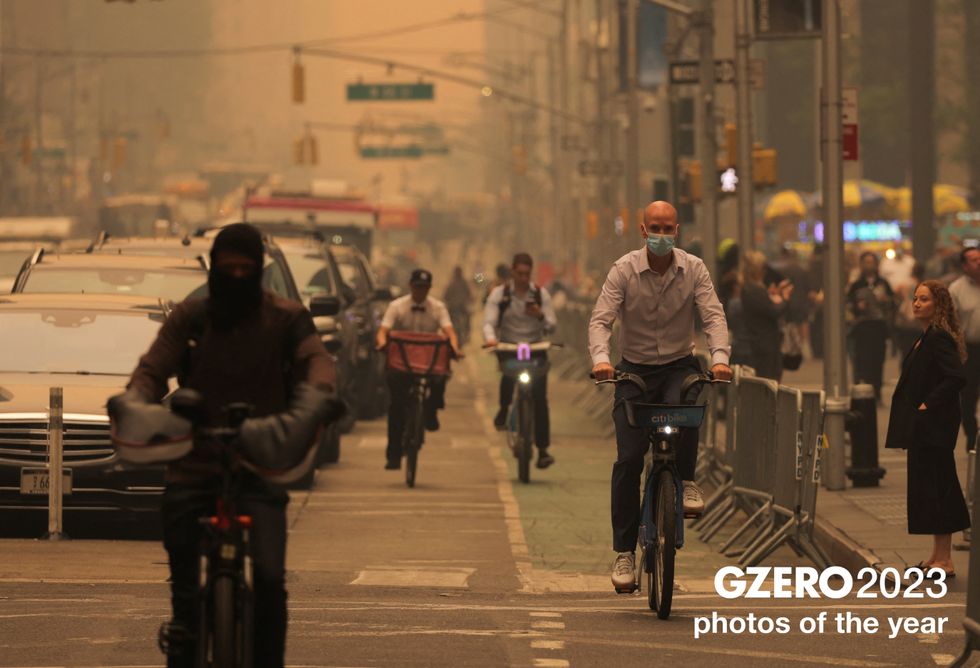
Credit: REUTERS/Andrew Kelly
People ride bicycles at 6th Avenue as haze and smoke caused by wildfires in Canada blanket New York City, New York, U.S., June 7, 2023.
Aug. 24: Trump mugshot
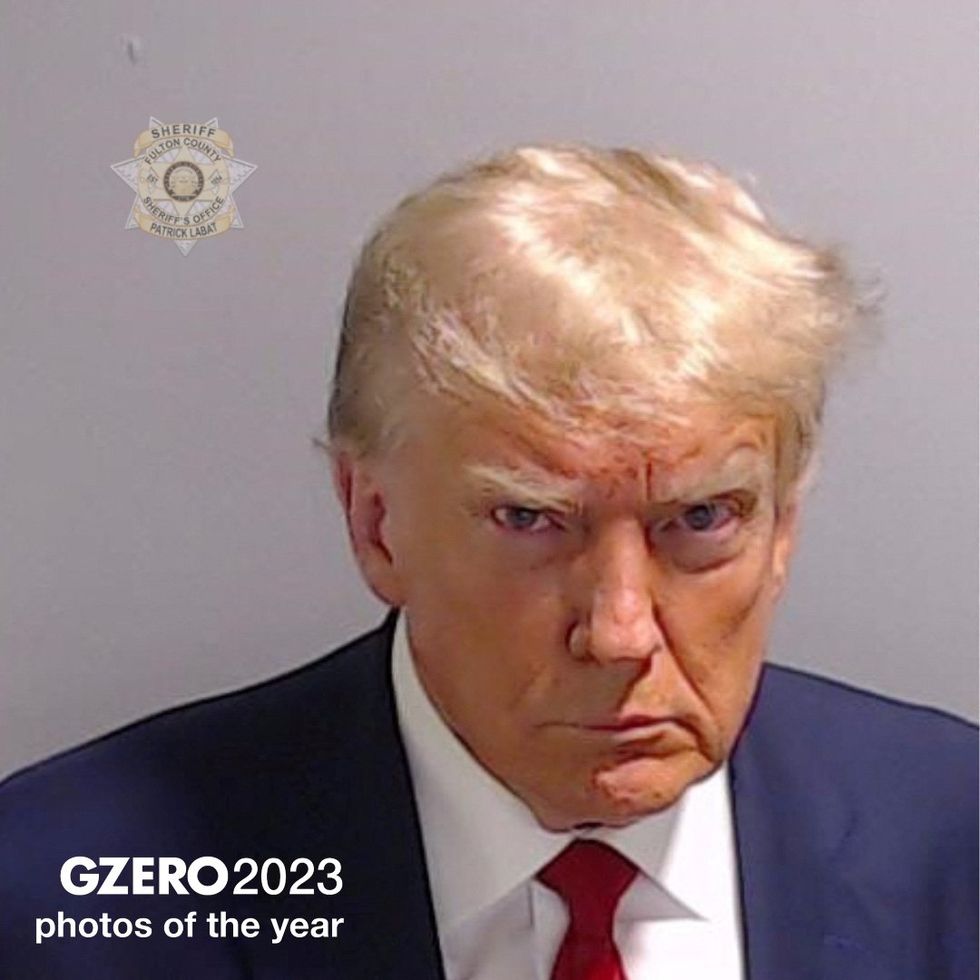
Credit: Reuters
Former U.S. President Donald Trump in a police booking mugshot released by the Fulton County Sheriff's Office, August 24, 2023.
Sept. 25: Milei’s chainsaw
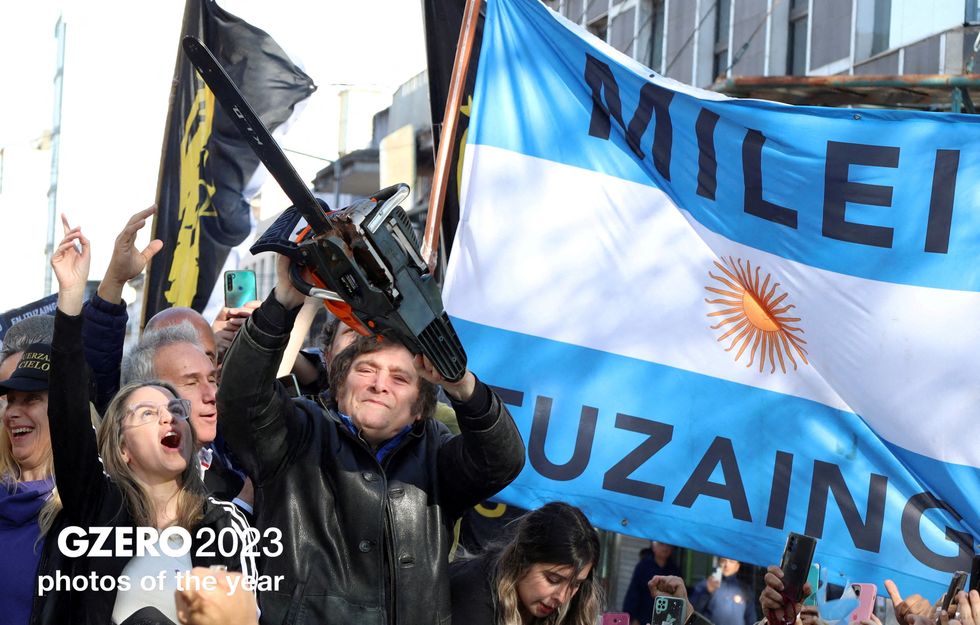
Credit: REUTERS/Cristina Sille
Argentine presidential candidate Javier Milei holds a chainsaw next to Carolina Piparo, candidate for Governor of the Province of Buenos Aires, during a campaign rally, in Buenos Aires, Argentina September 25, 2023.
Oct. 7: Noa Argamani kidnapped
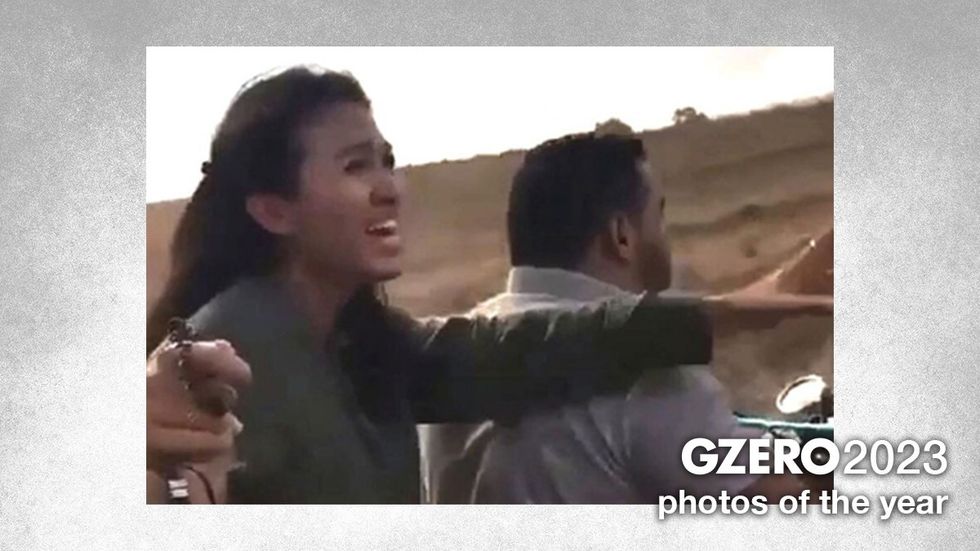
Nova music festival attendee Noa Argamani reaches out to her boyfriend, Avinatan Or, as they are kidnapped by Hamas terrorists on Oct. 7, 2023.
Oct. 9: Gaza’s children bombed

Credit: IMAGO/Medhat Hajjaj/apaimages via Reuters
A child at Shifa Hospital in Gaza City rests after surgery, having been wounded in an Israeli attack. October 9, 2023.
Oct 23: Afghanistan's historic Cricket World Cup win

Credit: ANI via Reuters
Hashmatullah Shahidi celebrates Afghanistan's victory against Pakistan. Oct 23, 2023
What will 2024 bring? Make sure to subscribe to the GZERO Daily newsletter to keep up.
And the (geopolitical) Oscar goes to …
It's the 95th Academy Awards on Sunday, and we all know that the Oscars often get political. You can expect speeches to reference Russia's war in Ukraine and, of course, US culture-war issues like identity politics. But in this era of political hyper-polarization in America and beyond, we’ve got our own awards to give out.
Here are our picks for a few of the best performances of the past 12 months.
Best Documentary Feature: "The Little Short," by El Salvador's President Nayib Bukele, based on his get-rich-quick bestseller "Bukele's Guide to Wealth and Fame in Crypto Markets."
Best Cameo/Actress in a Limited TV Miniseries:Liz Truss as British PM.
Lifetime Achievement: Former US House Speaker Nancy Pelosi for "My Trip to Taipei," a tour de force in DNGAF about the geopolitical consequences of my actions.
Best Costume Design: US Rep. (and alleged serial liar) George Santos (R-NY) as a drag queen in Brazil.
Best Editing: Xi Jinping for ending zero-COVID in China — and all references to it too.
Best Special Effects: The US/Russia/pro-Ukrainian group/we'll-never-know-who for the Nord Stream pipeline explosion.
Best Sound Editing in Parliament/Exit From the Party: Former New Zealand PM Jacinda Ardern.
Best Screenplay/Cinematography: C-SPAN for "The House Speaker Fight," an unexpectedly riveting story of failed votes, failed fistfights, and failed leadership in the US Congress.
Best Remake: Jair Bolsonaro, director of the 8 de Janeiro reboot of January 6.
Best Picture: "How I Learned to Stop Worrying and Love the Balloon," a Kubrick-esque Cold War 2.0 satire featuring Joe Biden, Xi Jinping, and a floating weapon of mass puns.
Lessons from “balloon-gate”
By now you’ve heard and read plenty about the Chinese spy balloon that floated across the continental United States last week before it was shot down off the coast of South Carolina on Feb. 4, so I’ll spare you the details. Absurd as it was, we’re not going to remember the incident in a couple of months. Heck, you probably don’t care already.
And that’s fair enough: The fact is the hullaballoo(n) was no big deal, for several reasons.
First, the balloon posed no threat to US national security. Washington and Beijing spy on each other all the time; China didn’t need a clunky unmanned orb to collect intelligence (they have satellites and, um, your cell phone for that). Second, this wasn’t the first time something like this has happened; the Pentagon confirmed at least four Chinese balloon incursions in the recent past, including three during the Trump administration. Third, the US had every right to shoot it down and little choice to do anything but once the incident went public. And fourth, President Joe Biden was probably right to wait to give the order until he did.
The outrage from all sides — the White House, Republicans, Beijing — is nothing but hot air. Nonetheless, the incident is interesting because of what it tells us about the world we live in.
So, what lessons can we draw from balloon-gate?
Xi makes mistakes — sometimes big and costly ones. There’s been lots of speculation about why China sent a slow-moving, 200-foot-tall balloon to hover over American nuclear silos (unlike most years, when it deploys Snoopy along 5th Ave), but I see only one reasonable explanation: miscalculation.
It was obviously no accident: The aircraft was reportedly “maneuverable,” but even if it wasn’t and Beijing’s claim that it was an “errant weather balloon” was true, the Chinese would have notified the US as soon as it went wayward. And it’s hard to imagine it was intentional, since Xi Jinping had nothing to gain from provoking the US now — not while China is in the middle of a charm offensive to court foreign investment and revive economic growth after exiting zero-COVID.
Maybe he assumed he could get away with it like he had in the past, or maybe he was badly advised about the risk of retaliation. Either way, Xi didn’t want this outcome. On top of his track record of consequential missteps, this should make everyone worry about what other serious blunders Xi could make in the future.
US-China relations are a minefield. Biden and Xi have both expressed a desire to build a “floor” under the relationship, but that will prove easier said than done amid structurally intensifying strategic competition and a complete absence of trust.
Balloon-gate is only the latest in a series of mutual escalations in recent weeks, including US sanctions on a Chinese company doing business with Russia’s paramilitary Wagner Group, a likely US ban of all trade with Chinese tech giant Huawei, and new proposed Chinese export controls on key high-tech industries.
And more clashes are sure to come soon as China grows closer to Russia (possibly in defiance of US sanctions), House Speaker Kevin McCarthy travels to Taiwan, and Washington tightens the screws on China’s tech sector. The fact that a literal balloon caused the US to indefinitely postpone a much-needed meeting with Xi is a sign of how little it could take for the relationship to … blow up.
US domestic politics complicate efforts to ease tensions. It’s very hard to imagine Biden was planning to shoot the balloon down if Secretary of State Antony Blinken was heading to China to meet with Xi. And Biden was very much still planning on sending Blinken to Beijing after he found out about the balloon. Why? Because it posed no real threat to anyone, and the trip was still in America’s interest. The minute photos of the balloon went public courtesy of the Billings Gazette, though, Biden had no choice but to back off.
That’s not flip-flopping — that’s politics. America’s political polarization and bipartisan support for aggressive China policy mean any US president would’ve been under intense pressure to act tough, even if doing so undermined US strategic interests and made conflict more likely. We saw this last year with former House Speaker Nancy Pelosi’s leaked trip to Taiwan, and we’ll see it again in the spring when Speaker McCarthy travels to Taipei. This perverse political reality limits the room to stabilize ties and incentivizes actions that risk confrontation.
All of this bodes poorly for Biden and Xi’s attempted détente. Ironically, Blinken’s trip to Beijing was meant to put guardrails in place to prevent these sorts of crises from spiraling out of control. But as this episode makes clear, Washington and Beijing will struggle mightily to prevent a drift toward escalation.
___________________
🔔 Be sure to subscribe to GZERO Daily to get the world's best global politics newsletter every day on top of my weekly email. Did I mention it's free?